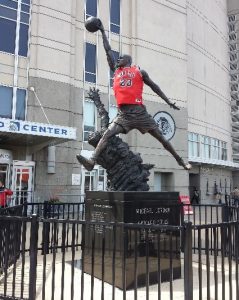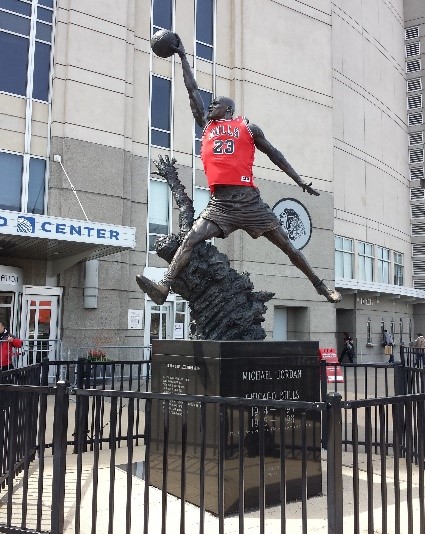Coming into law school at Loyola, I was really interested in learning about intellectual property (IP) law and possibly even making a career out of it. During my fall 2L semester, I had the chance to take my first IP course: the Intellectual Property Survey course. I was so excited to finally be able to study IP, and was eagerly anticipating the class.
What Does the IP Class Cover?
Professor Ho taught the class and she led us through each area of IP: trade secrets, trademarks, patents, and copyright. While there was a lot of material to cover, for the most part, I was able to grasp the concepts of each area fairly well. But then came copyright – this was when the material started to get confusing.
What is even Copyright?
So, what even is copyright? Let me explain. Copyright protects literary and artistic works that are “original”, “fixed in a tangible medium”, and have at least a “minimal degree of creativity” and are not barred. For example, copyright does not include facts, although an adequately creative arrangement of facts such as a new database can be copyrighted. Copyright also does not include ideas, methods, processes, or systems. Once an individual has a copyright, that individual has the exclusive rights to reproduce, to distribute, and to perform or display the work.
Copyright infringement occurs when another individual violates one of those exclusive rights to the work without the copyright owner’s permission and there is no justified exception.
In evaluating whether a copyright was infringed or not, a court first needs to find that the plaintiff has a valid copyright.
Then the court needs to evaluate infringement. There are two steps here. The first is to find whether the defendant had access to plaintiff’s work to ensure that any similarity is due to copying, rather than permissible independent creation. Access to the work can either be direct or indirect. Direct access is when a defendant admits to having access to the work. Indirect access is when a defendant had reasonable access to plaintiff’s work and there were substantial similarities between the two works in their whole. If so, then the court assumes there was access through these indirect means. For example, if I were to make a song that sounded very much like “Thriller” by Michael Jackson, then a court could assume I had access through indirect means because that song is widely available on the Internet.
If it can be shown that the defendant had access to the plaintiff’s work, then the last step in the test was whether defendant “improperly appropriated” plaintiff’s work. The reason there is this second step is because only some copying is considered impermissible copyright infringement. I was particularly confused by this element of the test of “improper appropriation.”
Confusion over Improper Appropriation
To determine if any improper appropriation occurred, the court must filter out any uncopyrightable elements of the plaintiff’s work. Once again, uncopyrightable elements include facts, ideas, concepts, processes, and methods. Once the uncopyrightable elements of the work have been filtered out, the remainder must be compared to the defendant’s work. If there is a substantial similarity between the two works, then the defendant is found to have “improperly appropriated” the work. In other words, the defendant would be found to have taken too much of the creative work.
Although I understood what was not copyrightable, I did not fully understand how to “take out” these uncopyrightable elements of the plaintiff’s work. First of all, what did it even mean to filter out these unprotectable elements? By that I mean how could you exactly take out an idea or process? Furthermore, it seemed like every object or phrase in the expression is what made the work original and thus copyrightable. So how could you strip it out without seeing a different work? I just didn’t see how it could make sense.
A Clarifying Case Involving Michael Jordan

Picture by Frederick Lee from Unsplash.
Then we read Rentmeester v. Nike, Inc. (9th Cir. 2018). The case was about Nike’s recreation of photographer Rentmeester’s original photograph of Michael Jordan as a college student doing his famous “Air Jordan” pose. The Ninth Circuit had to determine whether Nike had improperly appropriated Rentmeester’s original photograph of Jordan in recreating a shot (since Nike had access to a clearly copyrightable photograph because Rentmeester demonstrated he had shown his photograph to Nike’s creative director).
In Rentmeester’s version, he had Jordan jumping towards a basketball hoop that was oddly set in front of a grassy knoll. Instead of having Jordan doing a normal jump, Rentmeester had Jordan doing the “grand jete” ballet pose in front of the hoop. Furthermore, the angle of the photo made it seem like Jordan was far away from the rim of the hoop, far enough that it seemed unrealistic that he could actually complete a dunk.
Sometime after Michael Jordan got drafted by the Chicago Bulls, Nike decided to re-create the image with their new spokesperson. While Nike re-used the grand jete pose of Jordan in front of a basketball hoop that Rentmeester had come up with, they made a number of changes to their version of the image. Instead of the background being a grassy knoll, the background in Nike’s version was the Chicago skyline with shades of red to signify him now playing for the Bulls. Furthermore, Jordan was placed much closer towards the hoop and it seemed much more likely that he could make a dunk from his position.
Ultimately, the court determined that Nike’s photo did take the idea of Jordan doing a grand jete ballet pose in front of a basketball hoop. But, since ideas are not protectable and thus must be “filtered out,” the idea of Jordan in this pose cannot be improperly appropriated. Strip away the idea behind the photograph and what you have left is two different expressions of the same idea.
Again, consider the differences. Rentmeester had a grassy knoll as the background and used an angle that made it appear that Jordan was very far away from the basketball hoop. On the contrary, Nike used the Chicago skyline painted in red as the background while having Jordan much closer to the hoop. As a result, the court found that Nike did not improperly appropriate Rentmeester’s work by expressing the idea in a different way.
This case taught me that, in evaluating improper appropriation, it is important to try to separate out unprotectable ideas from the overall expression, even if they seem one and the same. You have to look at whether the expressions of those ideas are so similar that it cannot be said that the defendant created an original work. Once I was able to see that, I understood improper appropriation better.
More to Come
While I better understood improper appropriation after reading the Rentmeester case, I later became confused on the fair use defense to copyright infringement. In fact, I was probably even more confused about fair use than I was about improper appropriation. In fair use, there are a number of factors that have to be evaluated, none of which are dispositive, and that evaluation is pretty complicated. But it is also very important since if a court finds there is a fair use, then there is no liability for an action that would otherwise be copyright infringement. Stay tuned for my next blog post which will discuss my confusion over fair use, and what helped me make sense of it.
To be continued…

Brendan Zdunek
Associate Blogger
Loyola University Chicago School of Law, J.D. 2023
